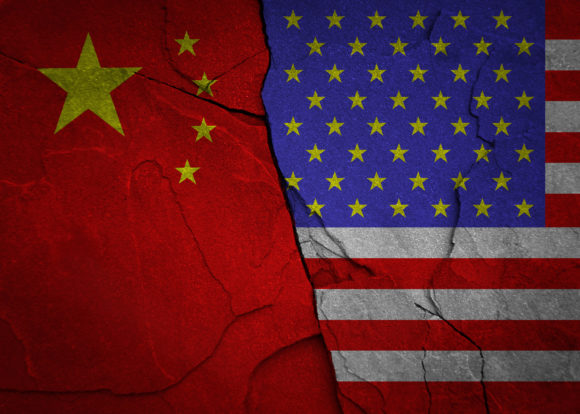The United States and China have agreed on the terms of a “phase one” trade deal that reduces some U.S. tariffs on Chinese goods while boosting Chinese purchases of American farm, energy and manufactured goods and addressing some U.S. complaints about intellectual property practices.
Following are details of the deal released by both sides. The broad outlines were similar to a deal in principle announced by Trump in October that was dominated by increased Chinese purchases of U.S. agricultural goods.
TARIFFS
The United States will not proceed with 15% tariffs scheduled to go into effect on Sunday on nearly $160 billion worth of Chinese goods, including cell phones, laptop computers, toys and clothing.
China canceled its retaliatory tariffs due to take effect that same day, including a 25% tariff on U.S.-made autos.
The United States will cut by half the tariff rate it imposed on Sept 1. on a $120 billion list of Chinese goods, to 7.5%
U.S. tariffs of 25% on $250 billion worth of Chinese goods will remain unchanged, providing U.S. negotiating leverage for a second phase of negotiations next year.
TRADE DEFICIT
U.S. officials say China agreed to increase purchases of American products and services by at least $200 billion over the next two years, with an expectation that the higher purchases will continue after that period.
The purchases include manufactured goods, agricultural goods, energy and services, and are expected to reduce the $419 billion U.S. trade deficit with China, officials said. China bought $130 billion in U.S. goods in 2017, before the trade war began, and $56 billion in services, U.S. data show.
AGRICULTURE
China has committed to increase purchases of U.S. agriculture products by $32 billion over two years. That would average an annual total of about $40 billion, compared to a baseline of $24 billion in 2017 before the trade war started.
Trump has demanded that China buy $50 billion worth of American farm goods annually. U.S. Trade Representative Robert Lighthizer said China agreed to make its best efforts to increase its purchases by another $5 billion annually to get close $50 billion.
China has committed to reduce non-tariff barriers to agricultural products such as poultry, seafood and feed additives as well as approval of biotechnology products.
INTELLECTUAL PROPERTY
The deal includes stronger Chinese legal protections for patents, trademarks, copyrights, including improved criminal and civil procedures to combat online infringement, pirated and counterfeit goods.
The deal contains commitments by China to follow through on previous pledges to eliminate any pressure for foreign companies to transfer technology to Chinese firms as a condition of market access, licensing or administrative approvals and to eliminate any government advantages for such transfers.
China also agreed to refrain from directly supporting outbound investment aimed at acquiring foreign technology to meet its industrial plans — transactions already restricted by stronger U.S. security reviews.
CURRENCY
The currency agreement contains pledges by China to refrain from competitive currency devaluations and to not target its exchange rate for a trade advantage — language that China has accepted for years as part of its commitments to the Group of 20 major economies.
The deal subjects any violations of currency commitments to the agreement’s enforcement mechanism, under which they could incur U.S. tariffs.
A senior Trump administration official said the currency agreement is based on provisions in the U.S.-Mexico-Canada Agreement trade deal, which require the three countries to disclose monthly data on international reserve balances and intervention in foreign exchange markets, along with quarterly balance-of-payments data and other public reporting to the International Monetary Fund.
ENFORCEMENT
Under dispute resolution is an arrangement allowing parties to resolve differences over how the deal is implemented through bilateral consultations, starting at the working level and escalating to top-level officials. If these consultations do not resolve disputes, there is a process for imposing tariffs or other penalties.
Lighthizer told reporters the United States expected neither side would retaliate if appropriate action was taken as part of the process and following “consultation in good faith.”
CHINA FINANCIAL SERVICES
U.S. officials said the deal includes improved access to China’s financial services market for U.S. companies, including in banking, insurance, securities and credit rating services. It aims to address a number of longstanding U.S. complaints about investment barriers in the sector including foreign equity limitations and discriminatory regulatory requirements.
China, which has pledged for years to open up its financial services sector to more foreign competition, said the deal would boost imports of financial services from the United States.
But China’s state-run Global Times newspaper said that not all foreign institution will be able to tap China’s financial market. “Naturally, entities from countries which are friendly to China will be favored by the Chinese people,” the paper said in a commentary.
(Reporting by David Lawder, Andrea Shalal and Jeff Mason Editing by Leslie Adler
Topics Trends USA Agribusiness China
Was this article valuable?
Here are more articles you may enjoy.



 Severity Was Up, But Will Falling Claims Volume Impact the Profession?
Severity Was Up, But Will Falling Claims Volume Impact the Profession?  2 New Jersey Pilots Killed in Helicopter Collision Frequented Nearby Cafe Together
2 New Jersey Pilots Killed in Helicopter Collision Frequented Nearby Cafe Together  Howden US Tells Judge Brown & Brown Employees Fled Due to ‘Mistreatment’
Howden US Tells Judge Brown & Brown Employees Fled Due to ‘Mistreatment’  Freight Broker Says $400K in Lobster Meat Stolen in Fictitious Pickup
Freight Broker Says $400K in Lobster Meat Stolen in Fictitious Pickup 

